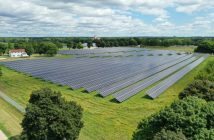Opinion
- The Global Alliance for Buildings and Construction reports that the global building sector CO2 emissions are up three per cent since 2010.
- Stakeholders in South Africa need to intervene boldly and take responsibility.
- There is no other way; each new building in South Africa needs to be net carbon zero.
According to the Global Alliance for Buildings and Construction, the buildings and construction sector accounts for nearly 40 per cent of total energy-related CO2 emissions and 36 per cent of final energy use worldwide. A growing population, as well as rapid growth in purchasing power in emerging economies and developing countries, means that energy demand in buildings could increase by 50% by 2050.
In its recent report, the UN Intergovernmental Panel on Climate Change called for “urgent and unprecedented changes” to reduce greenhouse gas emissions (GHGs) so that we avoid reaching 2℃. While 1℃ may sound incremental, the action required to stop it is not.
The government needs to set an example. Public sector buildings are increasingly uncompliant in South Africa. Read more
While the government has drafted a new law which will require the mandatory display of energy performance certificates in non -residential buildings, so much more needs to be done in terms of the corrective policy, new building regulations and incentives to transform the sector to net carbon zero buildings. Read more
Sector leadership bodies like the Green Building Council South Africa need to switch out from features based outcomes to real-time performance rating tools. Their current set of ‘public relations’ rating tools, imported from Australia and ‘adapted’ to the South African context, have over the years expanded sideways rather than growing in depth.
There is no ‘as built’ performance monitoring and consequences if intended performance does not meet actual performance. In short, GBCSA currently lacks the punch the country needs to change the way we design and construct buildings in order to mitigate the effects of climate change in the built environment. Read: Green Building Council – Green Warriors or Green Puppets?
South African architects, urban planners, engineers, designers and property developers also need to take responsibility for delivering carbon emissions-free buildings and cities in South Africa. Buildings are capable of producing their own energy through renewable sources including hydrogen. Read more
We now live in the age of the ‘high-performance building’ where design is centered on performance in relation to building users. Read more
The urgency now far outweighs the excuse that nett carbon zero buildings carry a higher upfront cost. The reality is that a high-performance building more than delivers over the life of the building through reduced operational and maintenance costs. You are also guaranteed a higher occupancy rate.
Relaxed avoidance or settling for mediocracy will mean our buildings and cities will become increasingly challenging for humans and the environment to co-exist. There is no other way; each new building in South Africa needs to be net carbon zero.
Author: Bryan Groenendaal











